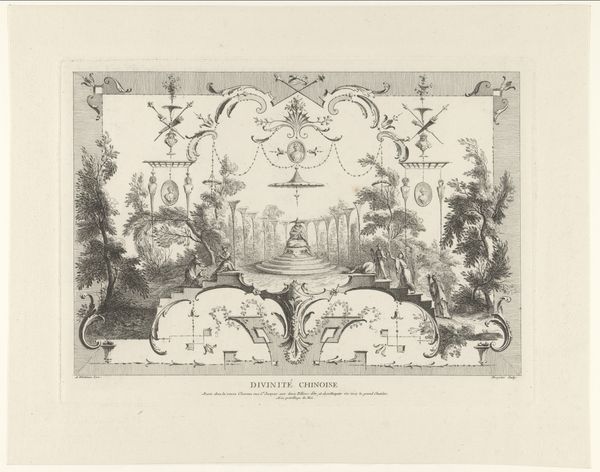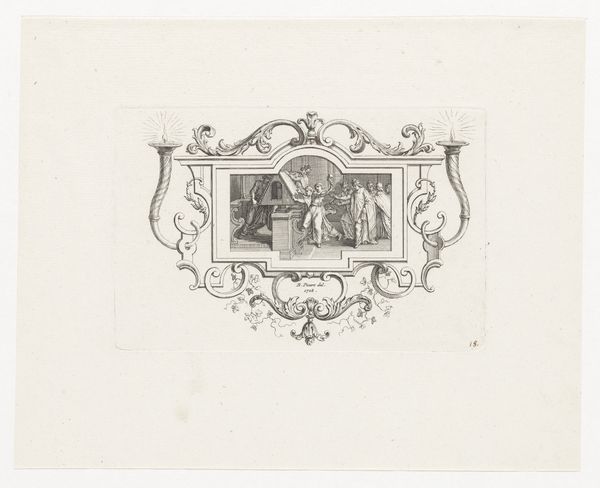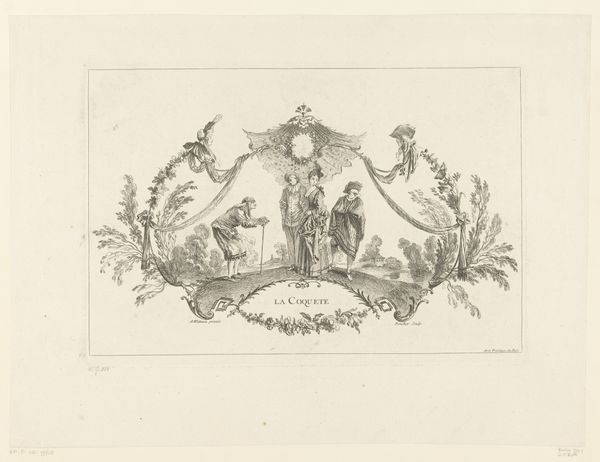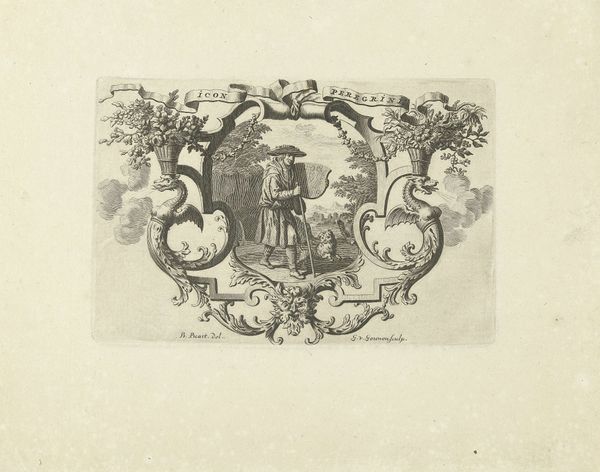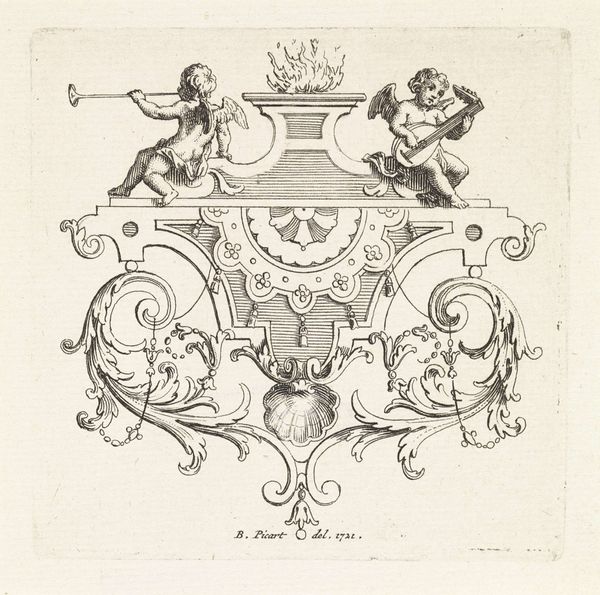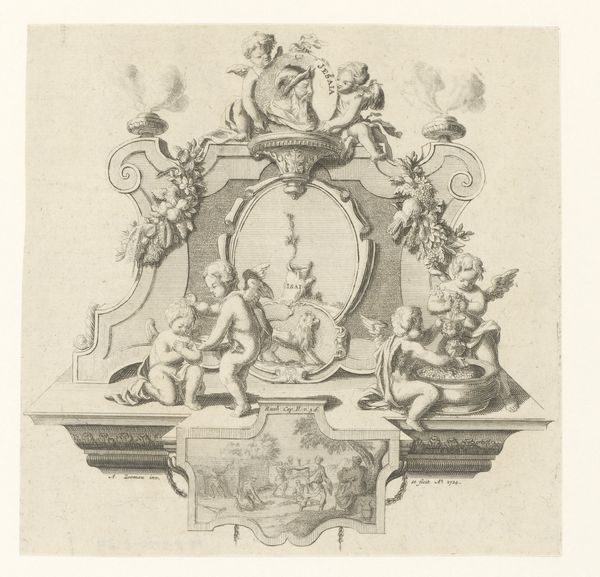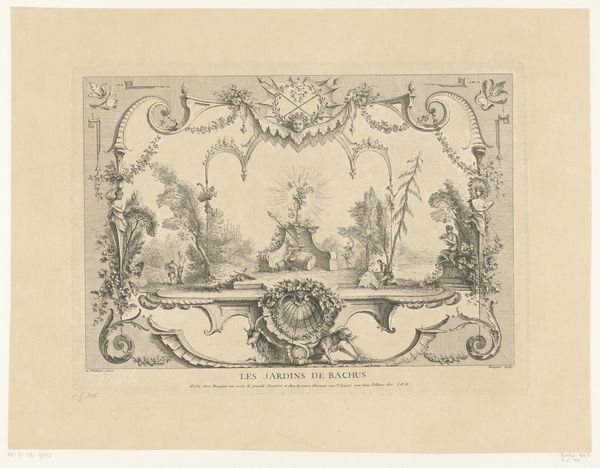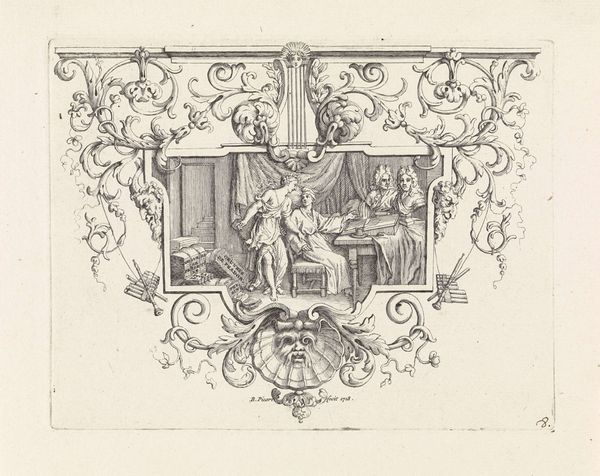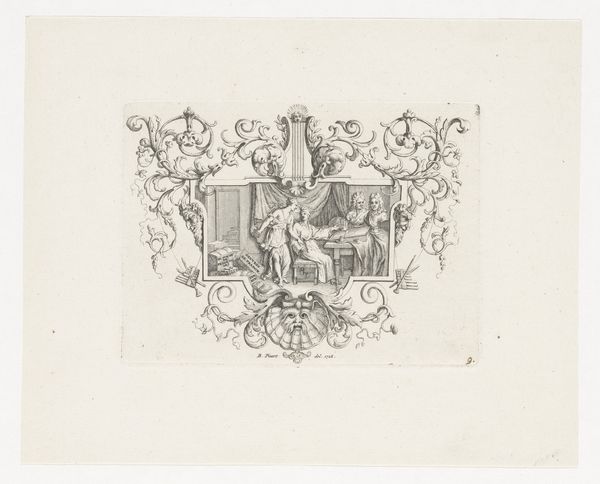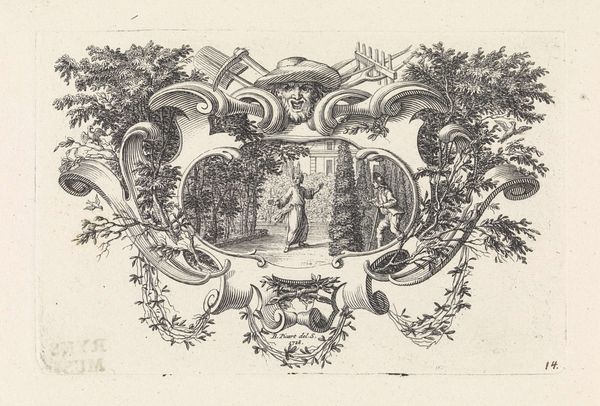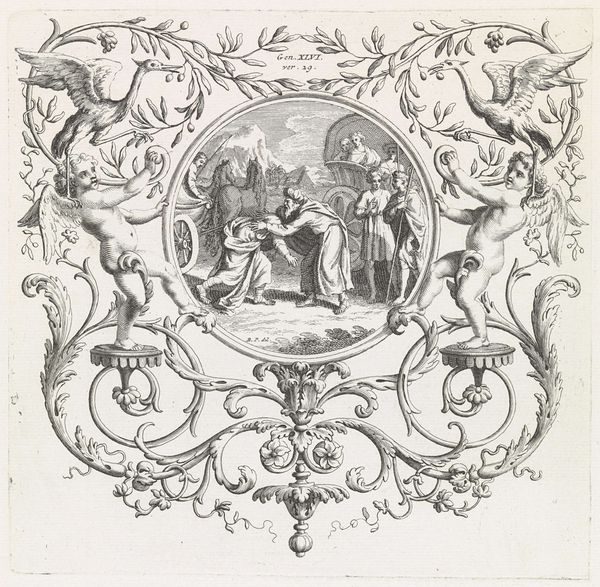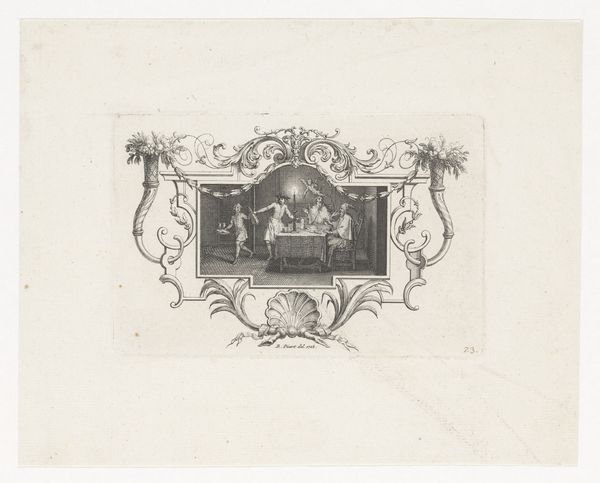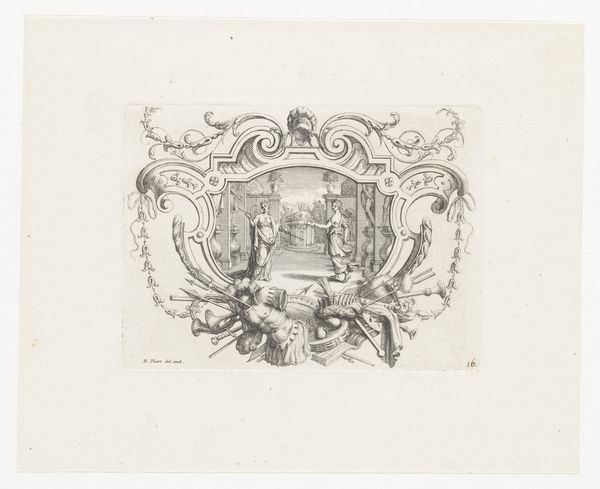
print, etching, engraving
#
narrative-art
#
baroque
# print
#
etching
#
old engraving style
#
figuration
#
ink line art
#
line
#
engraving
Dimensions: height 120 mm, width 134 mm
Copyright: Rijks Museum: Open Domain
Curator: At first glance, this etching seems whimsical, yet something unsettling lurks beneath the surface. Editor: You're right, there’s a tension between the ornate composition and what's depicted. I’m thinking of the context in which it was created. This is Bernard Picart's "Satyr, Scholar and a Donkey," dating to 1728, and held at the Rijksmuseum. Picart was an engraver operating within the world of publishing, a disseminator of ideas during the early Enlightenment. Curator: The contrast of the scholar with the satyr seems quite intentional; what do you think about the choice to render them in engraving? Picart had to make several decisions about using or rejecting existing engraving techniques. The crispness of the lines highlights the detail but there is some irony: it’s almost like mass production elevating the absurd, don’t you think? Editor: Definitely. We need to situate this work within the evolving visual culture of the 18th century. This was a time when satirical prints were gaining popularity, used to critique social norms. The donkey next to the scholar suggests ignorance, and, more specifically, that intellectuals of the time lacked an understanding of common folk. That said, if you want my frank impression, that satyr looks as clueless as the donkey! Curator: Look closer at the construction of the print: everything, including the creatures hanging above and swimming below, are composed using the same linear technique, erasing any distinction between the sensible and the absurd. Even nature itself is rendered with the same detached precision! Editor: Agreed, and let's not forget the animals above, either dead or captive. It’s all within a constructed framework that feels artificial. This reminds us that Picart worked in a period marked by colonialism and burgeoning natural sciences—which frequently categorized the world for exploitation. So, what might seem like playful satire becomes a commentary on power structures. Curator: By considering the materiality and process, we start to understand how even in its apparent frivolity, this print is deeply implicated in systems of knowledge production. Editor: Absolutely, engaging with the art historical and cultural context allows us to understand that “Satyr, Scholar and Donkey” is both funny and deeply critical of 18th-century society.
Comments
No comments
Be the first to comment and join the conversation on the ultimate creative platform.
